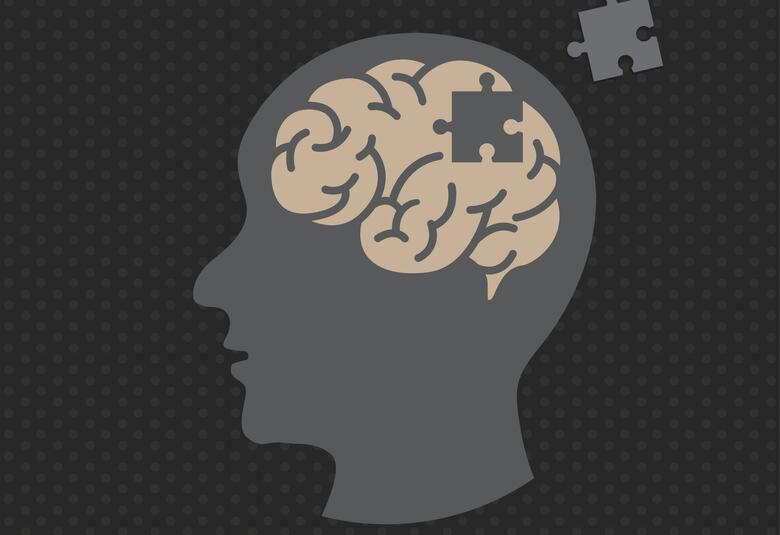At the 35th ECNP Congress in Vienna, Austria (15−18th Oct), in a symposium titled ‘Optimising outcomes in major depressive disorder (MDD): Managing patients who are not fully responsive to antidepressant treatment’ Prof George Papakostas (Harvard Medical School, USA) discussed how partial response to antidepressant treatment can confer a greater risk of relapse, chronic depressive episodes and work/relationship impairment. As such, monitoring for response and early changes to treatment are key. Prof Roger McIntyre (University of Toronto, Canada) discussed how improvement in patient goals for MDD treatment, including psychosocial functioning, are linked to treatment satisfaction, which can involve symptom control and limiting side effects. Dr Susana Sousa Almeida (Porto University, Portugal) then discussed how treatment response should be assessed early in the course of antidepressant treatment, if this is not adequately reached, dose adjustment, augmentation or switching strategies can be considered
Potential consequences of partial response to antidepressant treatment
Major depressive disorder (MDD) has a varied presentation,1 said Papakostas, “however, the goal remains the same: to resolve depressive symptoms and restore psychosocial functioning.” Studies have found that patients treated to remission can have greater functional improvement including significantly improved work performance and productivity.2,3
However, the STAR*D study revealed that many patients treated initially with a single selective serotonin reuptake inhibitor (SSRI) experienced persistent symptoms.4 Similarly, a meta-analysis by Papakostas showed that antidepressant response rates were, on average, 53.4% with first treatment and 36.6% with placebo, indicating that only a third of the treatment response is to a medication.5
Having predictors of treatment response will help improve and personalise MDD treatment through understanding of the factors that control this, said Papakostas. There are a few general predictors that may help pinpoint which patients are more likely to struggle and who may improve faster, such as neuroimaging, endocrine, immune and genetic indications, as well as socio-economic factors, medical and psychiatric comorbidities and symptom-based predictors.6 However many of these are still in development, reported Papakostas.
Partial response to antidepressant treatment confers a greater risk of relapse, chronicity and suicide
Poor outcomes to treatment can also be predicted by some symptoms that are not defined as indicative of MDD including hopelessness,7 anxiety symptoms8 and pain.9 Comorbid Axis 1 disorders as well as comorbid metabolic illnesses can also impact MDD response.4
Partial response should be tackled early as it confers not only a greater risk of relapse and shorter duration between episodes,10,11 but also ongoing risk of suicide,12 more chronic depressive episodes10,11 and continued impairment in work and relationships.13 It is also associated with mortality and morbidity14 and greater comorbidity complications, such as those from stroke,15 cardiovascular disease16 and diabetes.17
To achieve the above goals, changes are needed if there is inadequate symptom improvement in response to treatment, if MDD symptoms recur following recovery or if a patient doesn’t tolerate the medication they are on. Papakostas stressed that there is a need for vigilance to identify when these scenarios occur as earlier detection can lead to improved outcomes.18 He also discussed the need to consider the appropriateness and accuracy of the initial diagnosis, comorbid illnesses and adequacy of treatment with regard to dose and duration.19
It is important, said Papakostas, to regularly and frequently monitoring patients using both clinician and patient-rated tools, with consistency as to which are used. Assessment and tracking tools are also important to use as how a patient and how a physician defines symptom remission may not always align. For patients, the most important factors include ‘presence of positive mental health,’ ‘feeling like their usual self,’ ‘a general sense of well-being’ and, below these, ‘absence of depression symptoms.’20
Greater functional improvement occurs when patients are treated to remission
Patient preference is also vital in outcome. In a study where patients received their preferred treatment, be it medication or therapy, outcomes were better.21 “If we can engage patients in the choice-making decision,” said Papakostas, “that will boost placebo responses.”
The latest evidence regarding antidepressant use in patients with a partial response to treatment
Patient goals for MDD treatment may include improving family relationships, physical health and intellectual/creative ability; organising their home life; finding a job; and meeting friends and a partner.22 Investigations of patients taking an SSRI or a serotonin-noradrenalin reuptake inhibitor (SNRI) found a significant correlation between improvements in outcome and improvements in treatment satisfaction.23 Other studies have found that patient satisfaction with medication is directly correlated with adherence,24 which itself can contribute to sub-optimal outcomes.25
Treatment satisfaction is correlated with improvements in outcome in MDD
“Partial improvement with an antidepressant may be the rule rather than the exception,” said McIntrye as “this denotes ongoing disease activity.” Switching to another antidepressant is one management strategy for non-response.26 This was highlighted in the STAR*D study where patients were switched from the initial SSRI to another SSRI, an atypical antidepressant, an SNRI or cognitive therapy. The results was that 31% of patients switched to a second antidepressant achieved remission at Weeks 5−7.27,28 The message here, said McIntrye is that “we should be prioritising first-line the treatments with the greatest therapeutic potential, that are tolerated, and if the patient is not benefitting they should immediately go to a medication that has evidence-based treatment with proven tolerability.”
Optimising treatment outcomes in partial responders: When to increase dose, augment or switch? Sousa Almeida
“There are challenges,” said Dr Sousa Almeida, “in identifying the optimal management strategy for people with MDD.” These include identifying the most appropriate treatment for partially responding patients29 and whether a dose increase, medication augmentation or combination, or switch is needed. Guidelines for such may differ by country.30
While guidelines include increasing the dose of an antidepressant, this may not confer greater efficacy, particularly with SSRIs. There is also the need to balance treatment efficacy with side effects, which are more common at higher doses.31 Combination therapy has been found to have improved efficacy outcomes compared to monotherapy, although there is risk of a greater side effect burden and while there are numerous potential combinations, there is limited data on these.27,32,33 Again, guidelines differ as to which combinations should be considered and at which line in the therapeutic decision tree to use them.30,34
In patients with MDD and partial remission, treatment choices include dose adjustment, augmentation and switching
Timing on when to explore alternative management is key but may be difficult. “We have to wait between the time the antidepressants kick-in and the risk we have before our eyes of prolonged symptoms of depression,” explained Dr Sousa Almeida.35 A study in 2848 patients showed that mean time to onset of improvement following antidepressant initiation was around 2 weeks, with a meant time to response of under 3 weeks. This also showed that early improvers were at least three times more likely to become sustained responders.36 This is important because in the Collaborative Depression Study, residual subthreshold depressive symptoms were related to more severe, relapsing and chronic depression.10
Although there are a number of guidelines, Dr Sousa Almeida highlighted how she most often used the Canadian Network for Mood and Anxiety Treatments guidelines that have a step-through approach starting with assessment of early improvement at 2−4 weeks and how to tackle treatment partial and non-response.37
The UK National Institute for Health and Care Excellence guidelines highlight how patient options and preferences should always be considered. Treatment can include addition of a group exercise intervention and switching to a psychological therapy as well as dose increase and switching options.38 “Negotiate and monitor all the way whether the patient is happy with the treatment,” urged Dr Sousa Almeida.
When switching, it is important to do so slowly, using cross-tapering and with monitoring of the tolerability of the second agent and withdrawal symptoms of the first.35 In conclusion, Dr Sousa Almeida said that further evidence and clearer guidance are required for switching antidepressants.
Educational financial support for this Satellite symposium was provided by Lundbeck A/S.
Our correspondent’s highlights from the symposium are meant as a fair representation of the scientific content presented. The views and opinions expressed on this page do not necessarily reflect those of Lundbeck.




